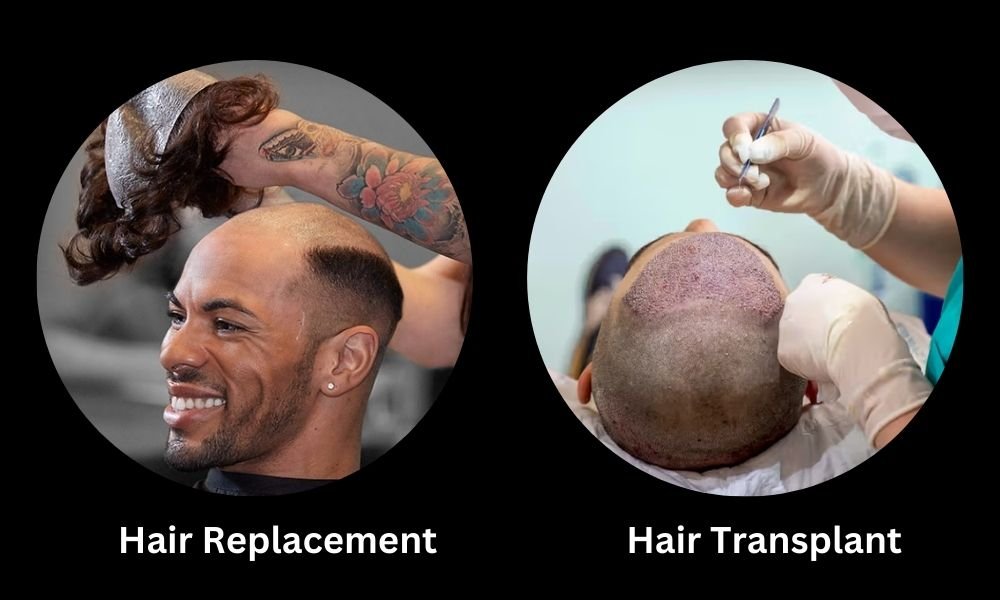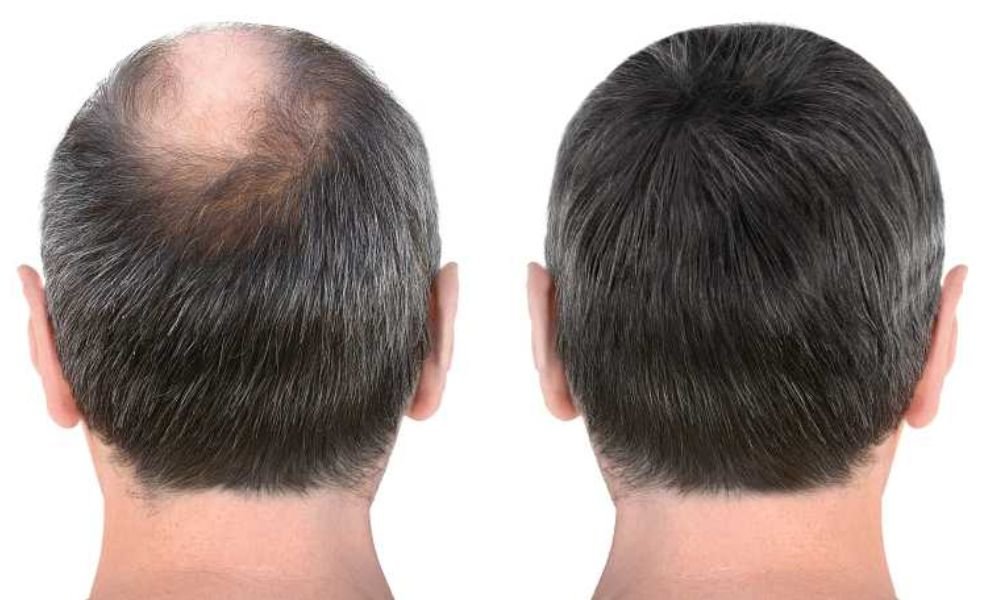In the world of hair restoration, two common terms often arise: hair replacement and hair transplant. While both aim to address hair loss and improve appearance, they differ significantly in their approaches, procedures, and outcomes. Let’s delve into the key differences between these two techniques:
Hair Replacement
Hair replacement refers to non-surgical methods used to restore hair appearance for individuals experiencing hair loss or thinning.
- Procedure: Hair replacement involves the application of customized hairpieces or systems to cover areas of baldness or thinning hair. These hairpieces, also known as toupees, hair systems, or wigs, are crafted to match the color, texture, and density of the wearer’s natural hair, providing a seamless and natural-looking solution.
- Customization: Hair replacement offers a high level of customization, allowing individuals to choose from a variety of options, including full head systems, partial units, or custom-made solutions tailored to specific areas of concern.
Advantages
- Immediate Results: Hair replacement offers immediate results, allowing individuals to achieve a fuller head of hair in a matter of hours without the need for invasive surgery.
- Versatility: It provides a versatile solution for individuals with varying degrees of hair loss, offering options to suit different preferences and lifestyles.
- Accessibility: Hair replacement is more accessible and affordable compared to surgical procedures like hair transplants, making it an attractive option for many individuals.
Considerations
- Maintenance: Proper maintenance is essential to ensure the longevity and performance of hair replacement systems. Regular care and attention are necessary to preserve the appearance and quality of the hairpiece.
- Social Perception: Despite its effectiveness, some individuals may face stigma or social judgment associated with wearing hairpieces, impacting their decision to pursue this option.
Hair Transplant
A hair transplant is a surgical procedure aimed at transplanting hair follicles from a donor area to areas of baldness or thinning hair on the scalp.
- Procedure: Hair transplant procedures typically involve two primary techniques: Follicular Unit Transplantation (FUT) and Follicular Unit Extraction (FUE). FUT involves harvesting a strip of scalp from the donor area, while FUE involves extracting individual hair follicles directly from the scalp. The harvested follicles are then implanted into recipient sites on the scalp, where they continue to grow naturally.
- Natural Growth: One of the significant advantages of hair transplant procedures is that the transplanted hair follicles continue to grow naturally, providing permanent results over time.
Advantages
- Permanent Results: Hair transplants offer a long-term solution to hair loss, with transplanted hair follicles continuing to grow naturally for the rest of the individual’s life.
- Natural Appearance: Transplanted hair blends seamlessly with existing hair, providing a natural and undetectable result.
- Minimal Maintenance: Once the transplanted hair follicles have taken root, they require minimal maintenance, allowing individuals to enjoy a full head of hair without ongoing interventions.
Considerations
- Surgical Procedure: Hair transplant procedures involve surgical intervention, which carries inherent risks such as infection, scarring, and bleeding. Individuals considering hair transplants should carefully weigh these risks against the potential benefits.
- Cost: Hair transplant procedures can be more expensive than non-surgical options like hair replacement, making them less accessible to some individuals.
- Recovery Time: Recovery from a hair transplant procedure can take several weeks, during which individuals may experience discomfort, swelling, and temporary shedding of transplanted hair.
The Hair Dilemma
In Delhi, The Hair Dilemma drives individuals to seek the best hair replacement services tailored to their needs. With a plethora of options available, from non-surgical hair systems to advanced transplantation techniques, Delhi offers diverse solutions for hair loss concerns. Expert consultations and personalized treatments ensure natural-looking results, restoring confidence and self-esteem. Navigating the Hair Dilemma becomes manageable with Delhi’s top-notch hair patch services, empowering individuals to embrace their unique beauty with ease.
Conclusion
While both hair replacement and hair transplant aim to address hair loss and improve appearance, they differ significantly in their approaches, procedures, and outcomes. Hair replacement offers a non-surgical, customizable solution with immediate results, while hair transplant provides a surgical intervention with permanent, natural-looking outcomes. Individuals considering hair restoration options should carefully evaluate their preferences, priorities, and budget to determine which approach best suits their needs. Consulting with a qualified hair restoration specialist can also provide valuable guidance and insights into the most suitable option for achieving desired results.
Don’t Miss: What is a Non-Surgical Hair Replacement? Is this Good or Bad


